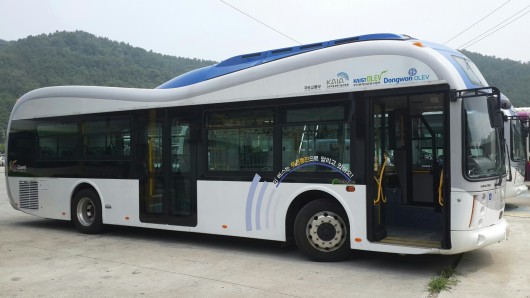Electric buses with wireless charging appeared in South Korea

The future is really approaching very quickly, in any case, the future that has been described in many science fiction novels. For example, a couple of days ago electric buses appeared in South Korea (something like a trolleybus, but with a wireless power line). So far, these vehicles are only two, and they ply the streets of the city of Gumi. It is worth noting that a vehicle of this type is the “native” development of the South Korean scientific research institute, Korea Advanced Institute of Science and Technology (KAIST).
The system itself is called Online Electric Vehicle (OLEV), and the principle of operation of OLEV is quite simple. Under the pavement, cables are laid that allow the electric bus to receive energy "through the air", it is something like an induction charger. In order for the energy to flow, it is necessary that there is a gap of about 20 centimeters between the bottom of the bus and the road.
')

At the same time laying of cables does not require opening the entire web. As far as can be understood, only 5-15% of the road should be dug up for cable laying. Induction charger solves the problem of finding capacious and dimensional batteries for this type of vehicle. Thanks to OLEV, relatively small batteries are installed in the buses, which is enough for the normal movement of the electric bus.
The developers claim that the efficiency of such a system is 85%, which is very good. Also, the developers note that all the characteristics of the electromagnetic field are within the normal range, and people walking along such a road, or riding in an electric bus, are not in danger.
By 2015, it is planned to launch another 10 such electric buses.
Via gizmag
Source: https://habr.com/ru/post/189238/
All Articles